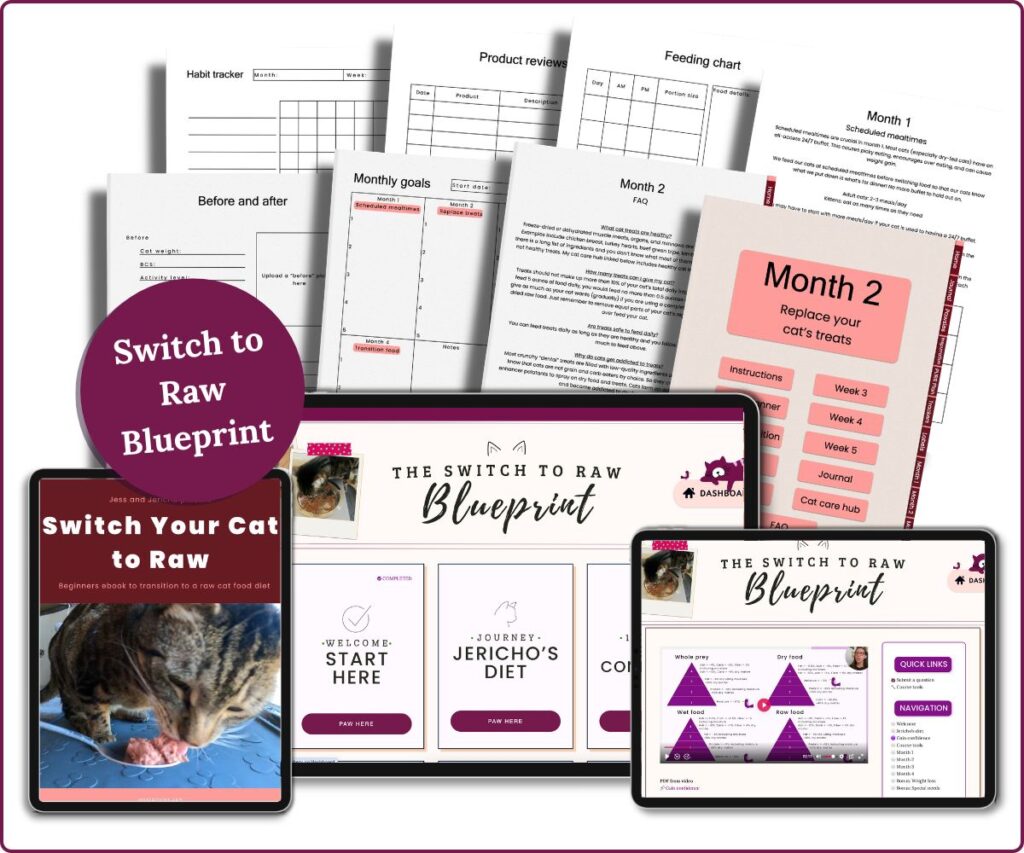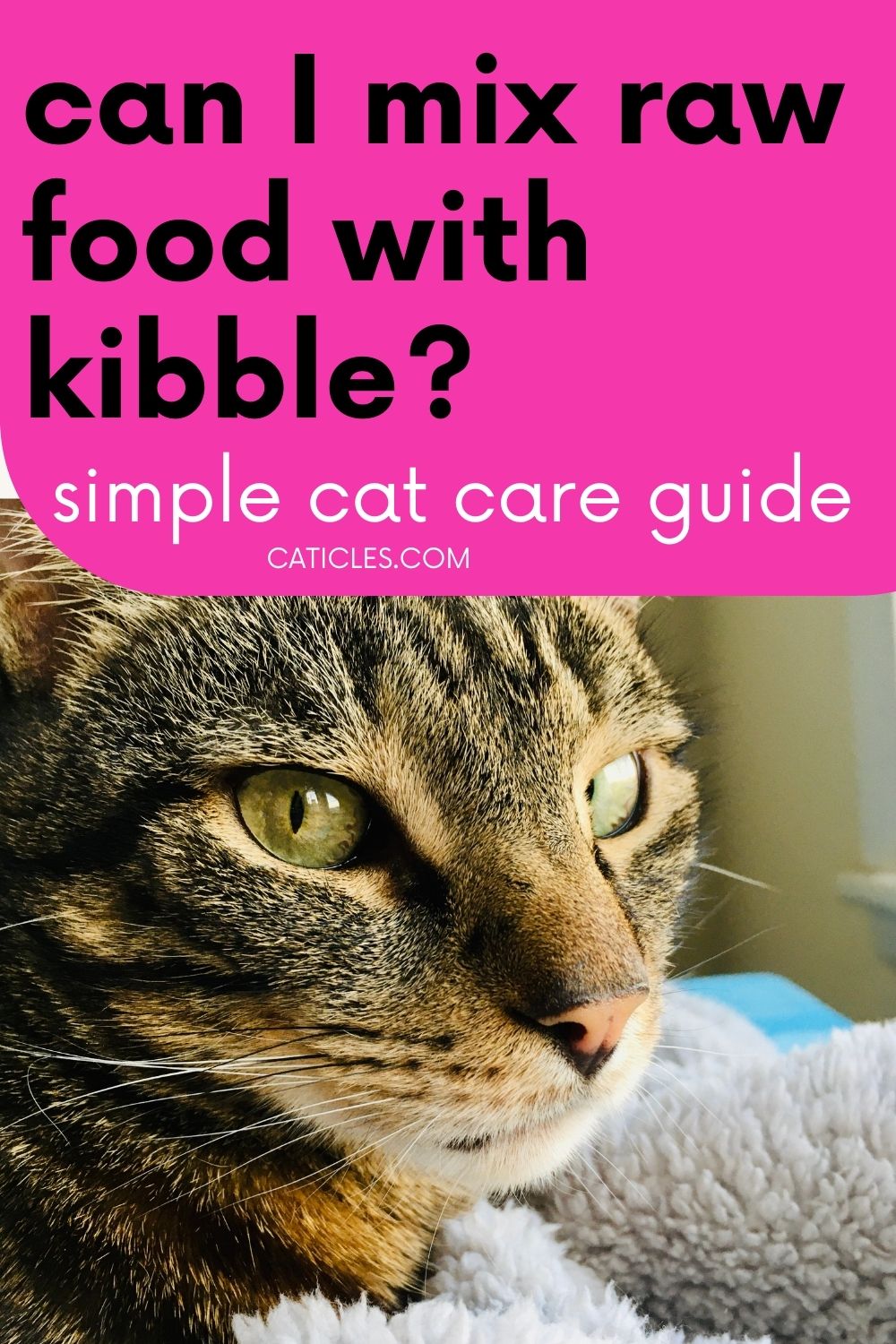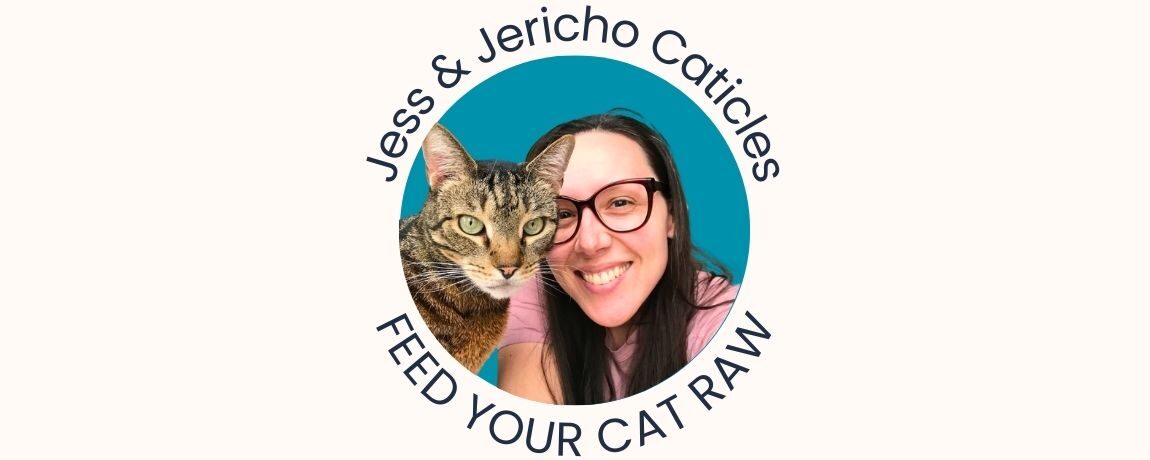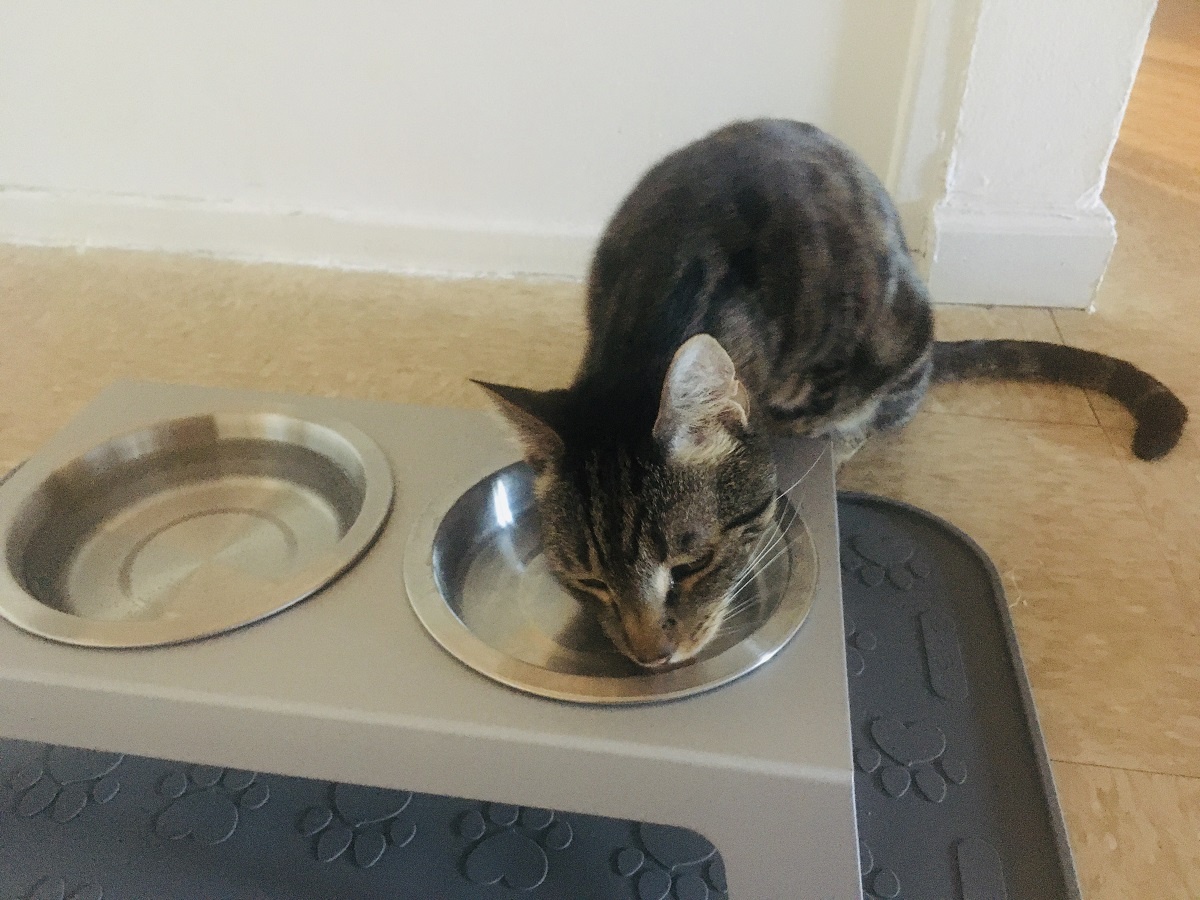I’m often asked, “can I mix raw food with kibble”?
Some raw feeders claim that you should not mix kibble and raw food.
But, apparently, you may not have issues mixing kibble and raw food.
As long as your cat’s gut flora is healthy.
To improve your cat’s kibble, check out supplementing kibble with raw.
Every cat is an individual. And some fresh food is better than none.
But if you want to feed the absolute best food possible, keep reading.
Kibble typically contains:
- Low moisture
- Bacteria
- Deadly mold
- Low-quality ingredients
The better option is to mix wet and raw food.
I’m not going to address digestibility and stomach pH. This gets too technical.
I understand that it’s frustrating that some say you can mix kibble and raw and some say you can’t.
But cat nutrition and biology are extremely complex.
Instead, let’s take a look at the different scenarios to determine why you want to mix kibble and raw.
I’ll use common sense as well as what holistic vets and studies have to say.
Check out the guide today or pin the image below to your Cat Food board on Pinterest.
Disclaimer: You (and only you) are responsible for your cat. I earn a commission through affiliate links below. No additional cost to you.
You want to mix raw food with kibble to introduce raw food
Your intentions are good if you want to transition to a raw diet.
However, cats are reluctant to and suspicious of change.
Especially when it comes to new food.
Think about it like this…
All cats have wild instincts ingrained. Wild cats have to be suspicious of new food. Because eating the wrong thing can be detrimental.
Cats also prefer predictability in their lives. They need a routine to feel safe and comfortable.
On top of that, most cats are addicted to kibble.
Your cat probably won’t take to raw food right away.
This will cause frustration and stress for you and your cat.
Raw diets require a steep learning curve. And it can be costly if you don’t prepare and organize properly.
The better option is to transition to an air-dried food or high-protein, low-carb wet food first.
This will probably be much easier for you and your cat. It will get your cat used to eating better-quality food.
It may take longer. But keep your end goal in mind.
You want to feed better quality, fresh food.
Transition cat food gradually so your cat accepts the new food.
Once your cat is adjusted to the wet food, you may start mixing raw food with wet.
You want to mix raw food with kibble to save money
I’m going to be blunt with you here.
Please know that I’m not claiming to be perfect. I’ve made plenty of mistakes.
I’ve learned these things along the way from experience and my feline nutrition education.
7 of my cats and 8 of my dogs had to die before my family and I realized kibble was the underlying cause.
I understand saving money is important.
However, your cat’s health is important too.
Think about it like this…
Kibble is not cheaper when you consider it in the long run.
- Kibble spoils quickly
- Dry food is damaging to your cat’s health
Kibble spoils quickly
Most cat parents think kibble is convenient because “you can leave it out all day”.
Many clients have said to me, “just top off the bowl when it gets low”.
Does that sound familiar?
This is very dangerous for a few reasons.
Your cat’s saliva will inevitably land on uneaten food at the bottom of the bowl.
Bacteria and mold thrive in moist environments.
When you “top off” the bowl, you’re mixing the new food with bacteria-rich and moldy food.
Keep in mind that bacteria and mold are microscopic.
So now a few days go by of “topping off” the bowl. Eventually, you have week-old food sitting in the bowl with new food on top.
Would you ever eat food that’s been sitting out for days?
Here’s another cringy thing that cat parents do…
They don’t wash food and water bowls daily.
Have you ever noticed a pink residue in your cat’s bowl?
That biofilm slime is due to bacteria.
Another reason not to leave food out all day…
Polyunsaturated fats oxidize and turn rancid quickly. Long-term consumption of rancid fats damages your cat’s health.
All foods (including raw) contain polyunsaturated fat.
Polyunsaturated fats are extremely weak. They oxidize quickly and then turn rancid. They continue to oxidize in the body.
That’s why pet food companies add antioxidants and preservatives. But, most of the time, these additives aren’t safe for cats in the long term, either.
So that “bulk value” bag of kibble doesn’t last as long as it claims. It starts to break down and spoil as soon as you open the bag.

Dry food is damaging to your cat’s health
I’m going to bring in some holistic vets and studies in this section.
I study feline nutrition. But I’m not a veterinarian.
Dr. Lisa Pierson has an entire website dedicated to the effects of kibble on feline health.
She states:
- Dry food often leads to obesity
- Diabetic cats cease needing insulin once the cat is off kibble
- CKD cats lose a lot of water via their kidneys especially on a dry food diet
- Urinary tract issues can be avoided with high-moisture diets
- Many reports of cats with IBD improve with a balanced homemade diet
- Feline asthma cats may have been reacting to storage mites or cockroach antigens in dry foods or it may be a reaction to gluten
And my favorite line…
“The idea that dry food promotes dental health makes about as much sense as the idea that crunchy cookies would promote dental health in a human.”
Your cat may be “fine” right now. But all of these health issues will sneak up on you. And cats are masters at hiding their pain.
Most of the time when you start to see symptoms, the damage is already done.

Dr. Elizabeth Hodgkins owns a patent in which she treats diabetic cats by switching from kibble to low-carb wet food.
Many of her patients, and her own cat, had their insulin needs decreased significantly.
And, in most cases, the cats stopped needing insulin altogether after switching from kibble to low-carb wet food.
Further, Dr. Hodgkins had two cases where a cat went back to eating kibble. Diabetes returned.
After switching the cats back to low-carb wet food, diabetes disappeared.
Important note: If your baby is diabetic you need to work with your vet on this. You will have to adjust insulin dose based on blood glucose when transitioning foods.

Ready to switch your cat to a species-appropriate raw diet? Get my proven plan that has helped 200+ picky cats thrive on raw!

Additionally, Dr. Hodgkins explains in her book, Your Cat: Simple New Secrets to a Longer, Stronger Life, “In my practice, most of the adult cats I see for the first time are overweight, and many are morbidly obese…
All of my overweight patients ate dry cat food as kittens and continued to do so as altered adults. This health-damaging weight gain does not occur when altered cats eat low-carbohydrate foods as adults.”
According to the Association for Pet Obesity Prevention, more than half of the cats in the US are overweight and obese.
And 82% of cat parents feed kibble either exclusively or most of the time (2019 data).
Dr. Karen Becker, another balanced homemade diet advocate, talks a lot about the health risks of obesity.
She states obese cats are at risk for:
- Shortened life spans
- Arthritis
- Respiratory issues
- High blood pressure
- Fatty liver disease
- FLUTD
- Decreased immune function
- Skin disorders
- Certain cancers
- Constipation
So is it really worth it to save money on kibble?
All of these health issues are extremely costly. Not to mention stressful and heartbreaking.
The American Journal of Veterinary Research studied the same food with 16 cats for 2 months. The only difference in the food was that one was wet and the other was freeze-dried.
They found, “The impact of water content on energy density and food consumption may help promote weight loss in cats.”
It just doesn’t make sense to mix kibble and raw food.
All of these kibble-related health issues are costly, stressful, time-consuming, and heartbreaking.
You’re going to spend a lot of money and time only to contradict the positive benefits of a raw diet by mixing it with kibble.
Final thoughts on mixing raw food with kibble
At the end of the day, some fresh food is better than no fresh food. So yes you can mix raw food with kibble.
However, think about it in common sense terms.
Cats are addicted to kibble and probably won’t take to raw food right away.
Transitioning to a raw diet will be easier on you and your cats if you transition to wet food first.
If you’re in it to save money, think about it like this.
You have 2 options:
- Save money and time now on cheap food and spend more in the long run on vet bills, meds, stress, and potential heartbreak
- Spend more money and time now on better-quality food and save more in the long run with a healthier cat that will probably live longer
Again, more than half the cats in the US are overweight and obese. And 82% of cat parents feed kibble.
The numbers show that kibble is making our cats overweight and obese.
Obesity causes serious health risks for all of us.
Digestibility and stomach pH aside…
It just doesn’t make sense to mix raw food and kibble.
Need more help with raw feeding safely? Check out my BARF diet for cats guide next!



